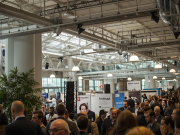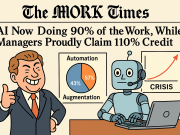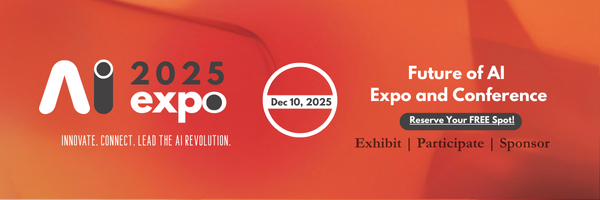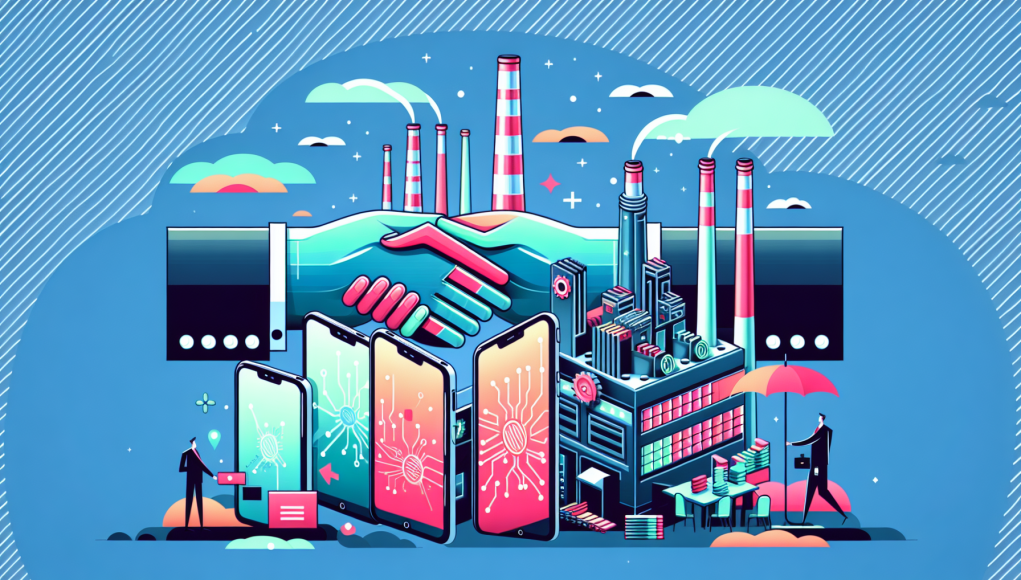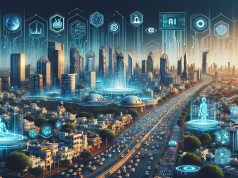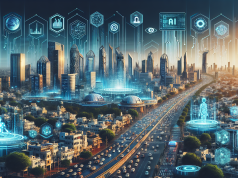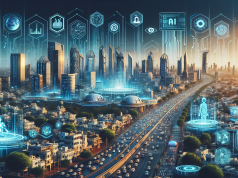Tata Electronics’ $100M Leap: Rewiring India’s Workforce for the Next Era of iPhone Manufacturing
When a global supply chain realigns, workplaces change first. Tata Electronics’ acquisition of Justech’s India unit for roughly $100 million is more than a corporate transaction: it is a signal flare for a shifting industrial geography and a test of how work, skills, and communities adapt to opportunity. With Apple aiming to move a meaningful portion of US-bound iPhone production to India by the end of 2026, this deal is an early chapter in a wider story of industrial upgrading, labour transformation, and the responsibilities of institutions that steward rapid change.
Beyond a Balance Sheet: What the Purchase Means for Work
At face value, an acquisition is a financial and operational decision. For the people who will build and test devices on assembly lines, the implications are far more visceral. New ownership will set priorities for workforce size, training, safety, pay, and operating rhythms. Tata Electronics, with the weight of the Tata Group behind it, brings access to capital, procurement networks, and managerial discipline. For workers, this could translate to steady demand for roles ranging from assembly technicians to quality assurance teams and logistics coordinators.
Yet capital alone does not create a modern factory. Turning a unit designed for lower-volume output into a facility capable of meeting Apple’s scale and quality standards requires deliberate investments in process engineering, facility upgrades, and — crucially — people. The workforce will be asked to master new routines, tolerate multi-tier quality control regimes, and meet strict compliance timelines. For managers, the challenge is to scaffold that learning without eroding morale or creating unsustainable pace.
Skills, Training, and the New Production DNA
One of the most tangible consequences of this transition is the demand for technical and soft skills. Workers will need proficiency in meticulous assembly protocols, familiarity with automated testing stations, and an ability to work within fast-changing production schedules. Equally important are skills in process improvement, data literacy for line performance metrics, and collaborative problem-solving.
Workforce development will likely move from informal, on-the-job learning to structured training programs partnered with local institutes, vocational centres, and in-house training teams. Short-term gains can be achieved with focused upskilling bootcamps; long-term resilience requires career pathways that connect entry-level positions to roles in maintenance, supervision, and supply chain coordination. When companies invest in visible career ladders, retention improves and knowledge becomes an asset intrinsic to the region.
Jobs and the Regional Economy: Multipliers at Work
The ripple effects are immediate. An expanded assembly footprint triggers demand for ancillary services: electronics subcomponent suppliers, packaging firms, equipment maintenance providers, and even food and transport services for the workforce. Micro, small, and medium-sized enterprises (MSMEs) in the region could see new contracts and revenue, provided procurement networks are intentionally localised.
Policymakers and corporate buyers can amplify these gains by creating procurement windows for local suppliers, encouraging clustering of component manufacturers, and supporting supplier capacity-building programs. The transition from import dependence to a more locally integrated supply base will determine how much of the economic value remains in the region versus flows out to global vendors.
Workplace Culture and Governance Under the Microscope
Scaling for Apple’s standards is not just a technical exercise; it demands a workplace culture built on accountability, transparency, and continuous improvement. Governance structures — from safety committees to grievance mechanisms — will come under scrutiny as the workforce expands and production pressures intensify.
Strong leadership can make compliance an aspiration instead of a checkbox. That means investing in frontline supervisors who are trained not only in metrics but in humane leadership: clear communication, predictable shift schedules, respectful oversight, and the ability to mediate conflict. When workers feel seen and protected, productivity gains are sustainable rather than brittle.
Automation, Augmentation, and the Human Equation
There is a tendency to frame manufacturing transitions as a binary between people and robots. The reality is more nuanced. Modern iPhone assembly blends precision human tasks with automation for testing, material handling, and inspection. The immediate imperative is to create hybrid workflows where technology augments human skill rather than replaces it wholesale.
For workers, this means an evolution of job content: more emphasis on inspection, troubleshooting, and oversight of automated equipment. For managers, it means redesigning shifts and performance metrics to recognize cognitive contributions, not just throughput. Thoughtful implementation can transform jobs into skilled positions that pay better and offer career mobility.
Infrastructure, Logistics, and the Hidden Work of Supply Chains
Manufacturing capacity does not exist in a vacuum. Ports, roads, reliable power and water, customs efficiency, and freight networks determine how quickly production can ramp and how cost-effective exports become. India’s advantage lies in its large labour pool and improving industrial infrastructure, but bottlenecks remain. Supply chain managers will be pressed to orchestrate just-in-time deliveries across long distances and coordinate across multiple suppliers with varying capabilities.
On the ground, this logistics choreography becomes a new set of jobs — schedulers, warehouse managers, freight coordinators — roles that anchor digital tools to physical operations. These positions provide alternative career tracks for workers and offer high leverage for improving overall plant performance.
Policy, Incentives, and the Role of Public Institutions
The move to shift US-bound production to India has a political and policy dimension. Incentives aimed at promoting local manufacturing, such as production-linked incentives, tax benefits, and export facilitation, will influence where and how quickly assembly scales. State governments in India will compete for investment, offering land, labour support, and infrastructure commitments.
Public institutions also bear responsibility for workforce readiness. Investments in technical education, apprenticeship frameworks, and transport links will smooth transitions for communities. When governments and industry co-invest in training and infrastructure, the benefits — stable jobs, higher incomes, and regional development — are more durable.
What This Means for Work Leaders and HR
- Reimagine hiring: Prioritise transferable skills and learning agility over narrow task experience.
- Invest in onboarding: Structured, measurable training programs will accelerate time-to-quality.
- Design career ladders: Make progression visible and tied to skill acquisition.
- Embed safety and dignity: Work design should protect physical and mental health under scale pressures.
- Measure what matters: Balance throughput KPIs with measures of morale, retention, and learning.
For those who lead facilities and HR teams, this is an opportunity to build models of manufacturing employment that defy the stereotype of monotonous, precarious work. Thoughtful design can create roles that are stable, reasonably paid, and technologically engaging.
Environmental and Social Considerations
Scaling consumer electronics manufacturing raises environmental questions: energy use, e-waste management, and water consumption. Factories that plan for circularity — recycling programs, energy efficiency, and responsible sourcing — will be better positioned to meet both regulatory expectations and consumer scrutiny.
Social responsibility extends beyond compliance. Worker welfare programs, community engagement, and transparent reporting on labour practices all contribute to social license to operate. In an era where supply chains are visible to consumers and activists alike, these factors influence brand reputation and long-term viability.
Looking Ahead: The Human Story at the Centre
The Tata-Justech transaction is a microcosm of a larger industrial tide: brands diversifying geography, nations courting high-value manufacturing, and workforces confronting new forms of technical, organisational, and social change. The most hopeful outcome is one where this change becomes a conduit for upward mobility — where an assembly line is not the end of a career but a launchpad for skills, entrepreneurship, and local economic resilience.
As Apple’s production map redraws itself, the real metric of success will not be how many devices leave a port, but how many livelihoods are strengthened in the process. For managers, policymakers, and the wider work community, the challenge — and the opportunity — is to ensure that this industrial moment builds capacity, not just capacity for production.
A Final Thought
Capital can buy facilities; it cannot alone forge craftsmanship, civic ecosystems, or trust. That is the work of people and institutions working in concert. If Tata Electronics’ acquisition leads to sustained investment in skills, safe workplaces, and meaningful career pathways, it will be remembered not only as a $100 million expansion, but as a structural step in redefining what modern manufacturing employment can look like in India and beyond.

